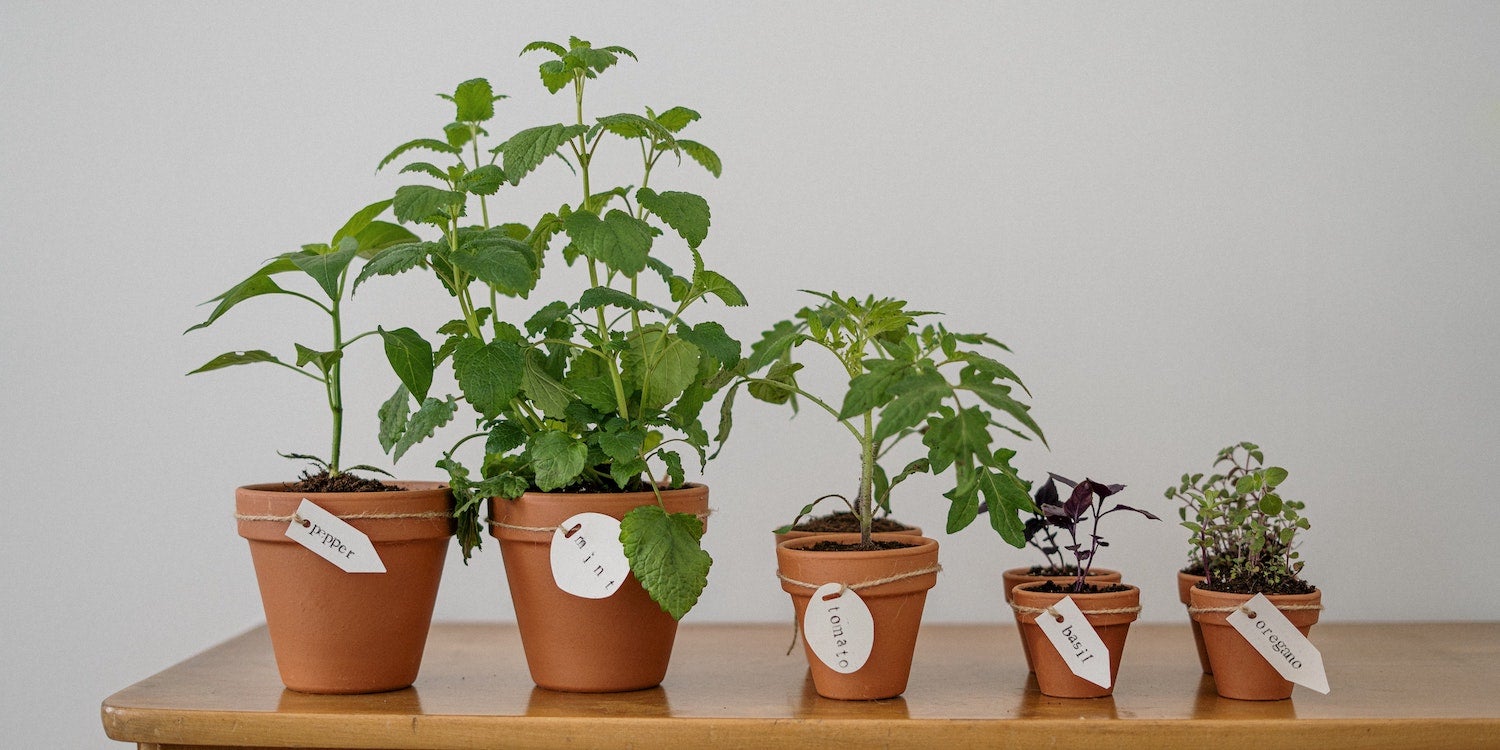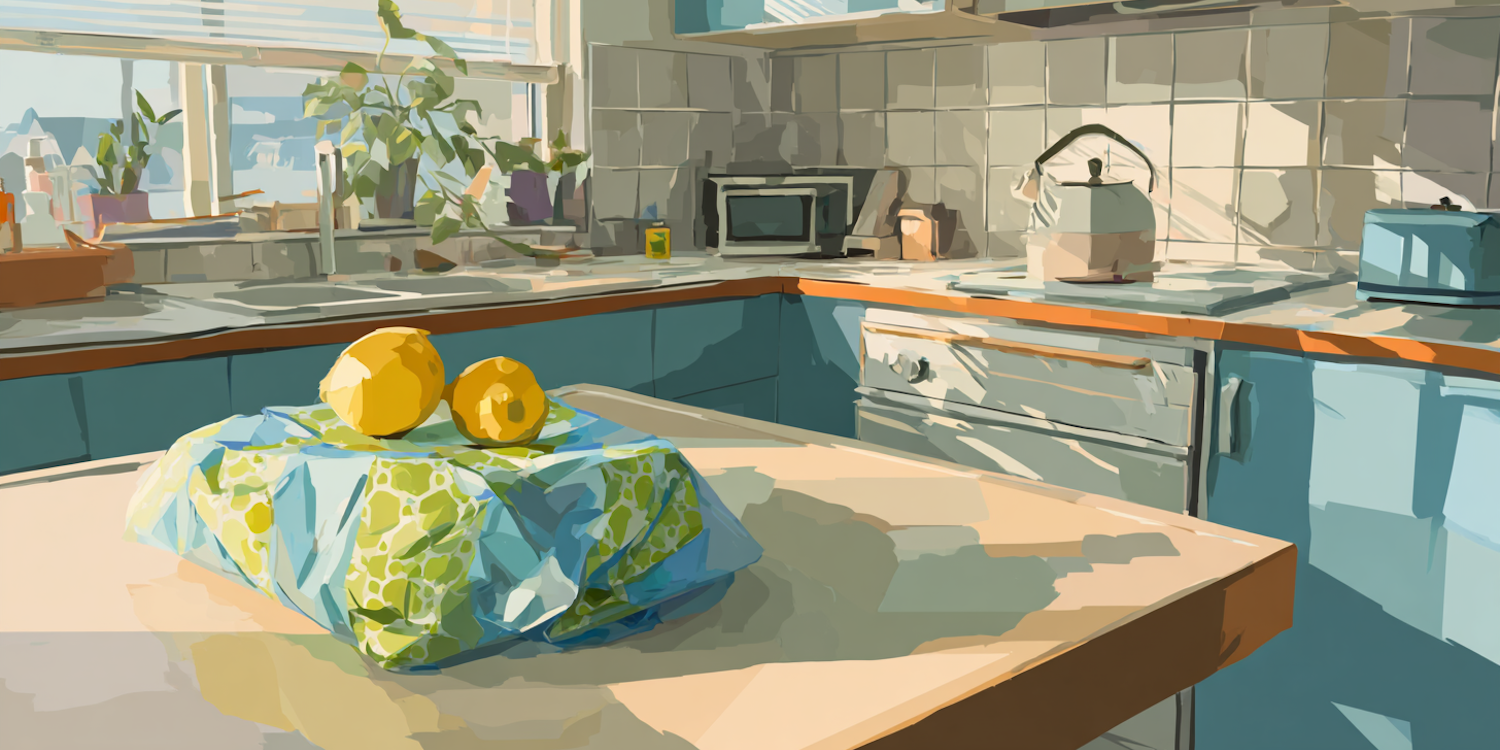The food that we eat creates a big carbon footprint, even if you only eat produce. For example, first the product has to be grown, which can sometimes include using harmful chemicals and pesticides. Then our food is often shipped a significant distance. Regularly, we transport food before it’s ripe, or it would be rotten by the time it got to you. Then there’s the carbon footprint of the store you buy the food at, and the waste that’s created if no one buys it. Last, going to the store is part of your carbon footprint if you drive.
We know, it’s a long, carbon emitting train that’s hard to avoid.
One of the most sustainable choices you can make when it comes to your food is choosing to grow your own food at home. While many people think they can only grow their food during certain seasons, there are actually many fruits and vegetables that can be grown during any season. All you have to do is grow it indoors.
One of the most sustainable choices you can make when it comes to your food is choosing to grow your own food at home.
By growing your own food you’ll be reducing your carbon footprint and saving time and money. You will have fresh, ripe produce in your own home. Some of the easiest vegetables and fruits to start growing in your indoor garden include citrus fruits, herbs, and root vegetables.
Growing Vegetables Indoors for Beginners

Perhaps you’ve had a garden outside before but haven’t grown anything inside. Or perhaps you’ve never had a garden at all. Either way, growing vegetables and fruit inside is possible in any home that can keep in heat, has access to water, and has sunlight. Keep in mind, sunshine can be bought.
One of the most important things to consider is the amount of sun your home gets. Your garden will need a window that gets 6 to 8 hours of direct sunlight to produce fruits or vegetables. The ideal window is often a sunny, south facing window. If you don’t have a sunny, south facing window, supplement with a grow light.
Make sure you’re watering your garden regularly. Depending on the amount of light you get, you may be watering your plant every couple of days to once a week. You can avoid over watering by not watering when the soil is still soggy or moist once the plants have germinated (more to come on that term.)
Lastly, be sure to keep your home 65 degrees or warmer to ensure your plants don’t get too cold.
Next, you’ll need to buy the essentials:
- A watering can (one that is preferably not made of plastic)
- A pot for the plant (also avoid plastic, look for a ceramic one instead)
- Gardening soil
- Seeds or transplants
Look for organic seeds when you’re shopping. During the winter months, it’s sometimes easier to find seeds online, like on Etsy. Food Print also has a great list of sustainable seed companies.
Once you’ve got your seeds, keep the soil relatively moist while they germinate. By germinate, we mean the time between planting and when the plant sprouts through the soil. Once they’ve sprouted, you can start watering when 1” beneath the top of the soil is dry. Don’t be afraid to get your fingers dirty!
Consider Growing a Citrus Family Tree Inside
If you ever wanted a literal tree inside your home, why not consider a citrus tree, like a lemon, lime, orange, or tangerine tree? If you don’t have high ceilings or lack room for an entire tree, consider a dwarf variety of these plants instead. None of your trees will be as big as outdoor trees when they’re planted in a container, so don’t worry about a tree taking over your home. The smaller the pot, the smaller your tree will stay.
It can take up to three years for your tree to produce fruit, however, if you get an older tree (rather than growing one from seed) you can often get fruit sooner. Most citrus fruits start growing over the winter and ripen by the end of spring. While these are slower growing plants and a long-term investment, they do produce more fruit once they mature. They also make beautiful accents in your home.
These plants need about 8 hours of sunlight a day, so be sure to only invest if you have the appropriate amount of light. As mentioned earlier, you can also buy a grow light. A citrus plant will need 16 hours of grow light. Otherwise, the plant literally will not bear the fruits of your labor.
Easy Indoor Plants for Beginners - Herbs!
Herbs are some of the easiest and fastest-growing plants for indoor gardens. They don’t need big pots (like a lemon tree might), and certain varieties don’t need a ton of light. Each herb is a little unique in taste, texture, and needs. Be sure you do a little extra research on the herbs you do pick to set your garden up for success!
For example, some herbs can be toxic for cats and dogs, like lemongrass, mint, and oregano. If your home is shady, consider planting mint, which needs less light than other herbs.
Here are some of the herbs that can be grown indoors:
- Basil
- Mint
- Dill
- Rosemary
- Parsley
- Cilantro
- Sage
- Oregano
- Thyme
- Chives
- Lemon Balm
- Bay Laurel
When spring rolls around, you can move your little herb pots outside. Or, you can transplant your herbs into garden beds or the ground.
Some of the Fastest Growing Vegetables Indoors: Root Family Vegetables
If you’re not sure what we mean by root vegetables, think of produce that grows underground. Carrots, onions, radishes, and potatoes are all root vegetables that can be grown inside.
The root you pick will determine the depth of the pot you need. Baby carrots are able to grow in a smaller pot. Onions will need wider pots. Potatoes will need deeper pots to accommodate multiple potatoes. Make sure to give each root vegetable 2-3” of room even once they’re full grown.
For carrots and radishes, sprinkle seeds on top of the soil, and then clip or pull extras so you have enough space for each root to grow to full maturity.
Here is a general harvesting timeline for a handful of root vegetables:
- Carrots can take 70-80 days to mature
- Potatoes take 60-90 days
- Onions take the longest, with 100-175 days to maturity
If you’re ready to eat your garden veggies ASAP, plant radishes. They only take 21 - 28 days to harvest.
Make an Indoor Garden a 2022 Resolution
When we tell you to close your eyes and picture a garden, it’s likely you picture a backyard with raised garden beds. There may be plants overflowing from their boxes or troughs. Or maybe the garden in your head is planted in the ground, with perfect rows of fruit and vegetables. We often picture a garden as an extended space that’s outdoors and accommodates many plants.
But this is not the case.
A garden is one plant that you care for, and can eventually eat if you want to. Whether you’re growing three carrots, five different types of herbs, or a lone lemon tree, you have a garden. And, a garden doesn’t have to be inside. You can create your own garden in a window sill, on a counter, in a bay window, or in a corner with a grow light.
Gardens are almost limitless in their possibilities. That's one of the reasons growing an indoor garden is so exciting. You have many possibilities for a winter garden. You’ll Reduce your carbon footprint. And you’ll grow something that you can eat.






